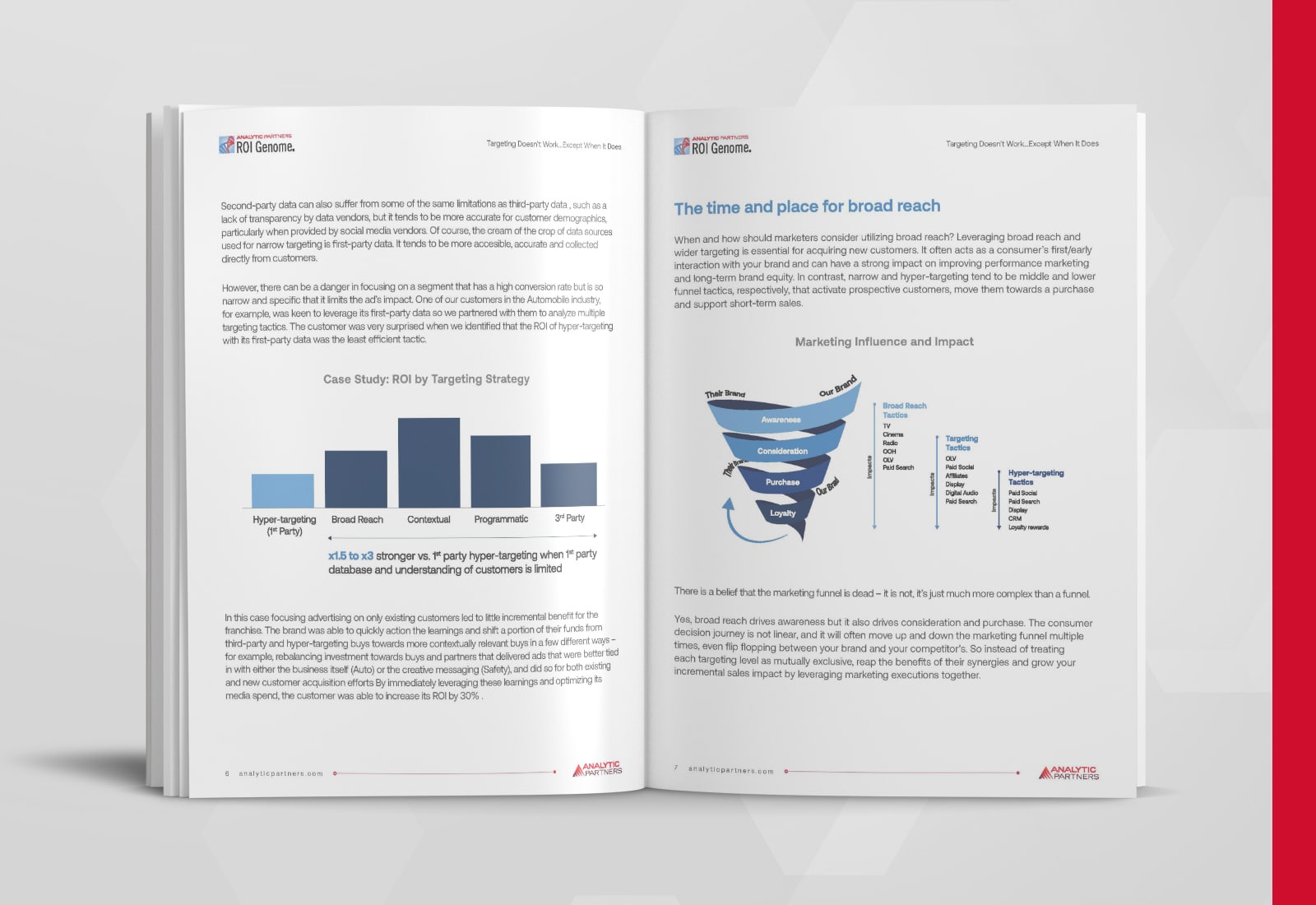We just released our latest ROI Genome Intelligence Report: Targeting Works, Except When it Doesn’t. Although targeting has long been a staple of marketing strategies, deploying it as an effective tactic can be deceptively complex.
This shift in investment from broader reach to more narrow targeting tactics is apparent in our ROI Genome data. In 2021, 75% of all sales driven by marketing investments were sourced from channels with the potential for narrow targeting (e.g. Social, Display, Online Video), which was up from just 55% five years ago. But has this type of narrow targeting lived up to its promises? We have found that it does not.
Why? In part because it is a murky pool of data vendors, mystical algorithms and it isn’t always executed optimally. Due to device sharing, walled gardens, and the crumbling of the cookie, the accuracy of targeting with third-party data is becoming more and more questionable. Increasing consumer privacy concerns are also creating a ripple effect: people are more protective of their personal data now than any time in recent memory, leaving large gaps in data and capabilities.
However, contextual targeting (buying ad space based on the relevance of a website’s content to your product) can work very well for brands. In fact, our ROI Genome has identified on average contextual targeting is 1.2x to 2.5x more effective than other forms of targeting when costs are comparable.
But there’s more to the story – and there is a time and place for most types of targeting depending on the industry and strategy. Access a copy of our latest report to learn more about how business leaders should navigate these murky waters and develop a winning strategy.





